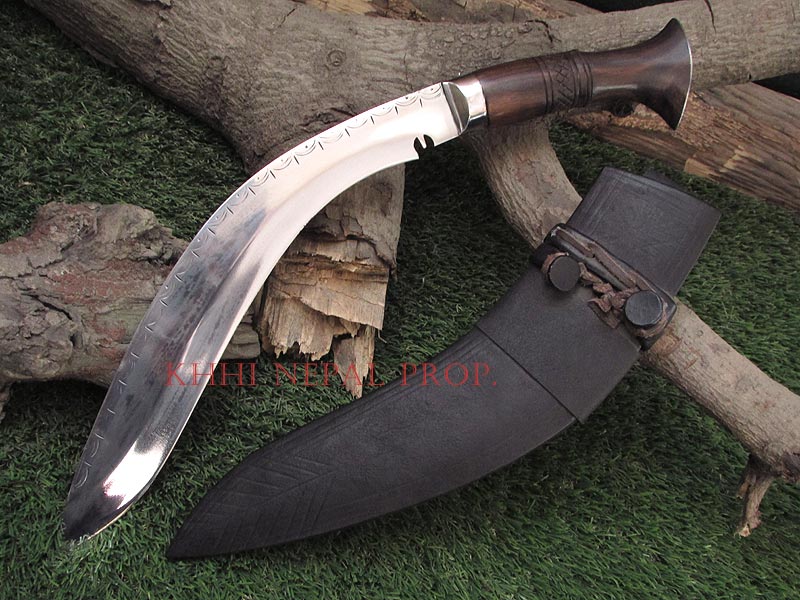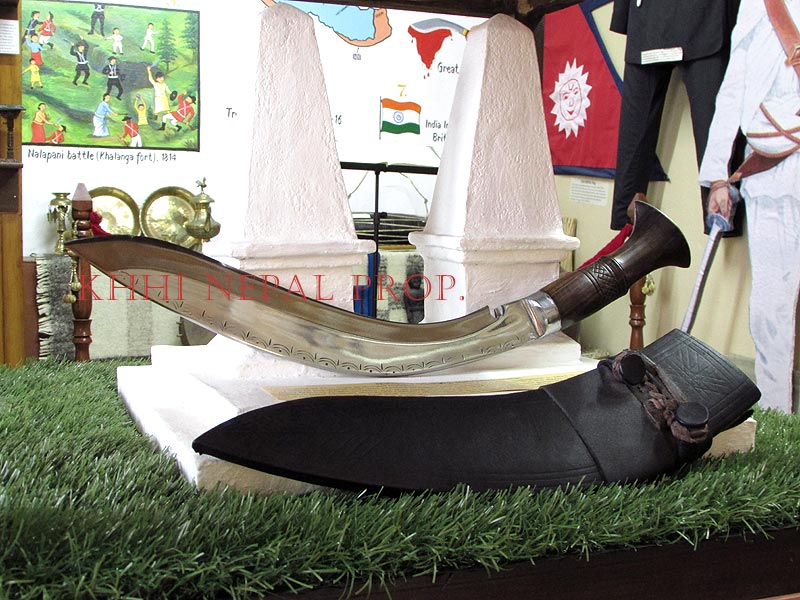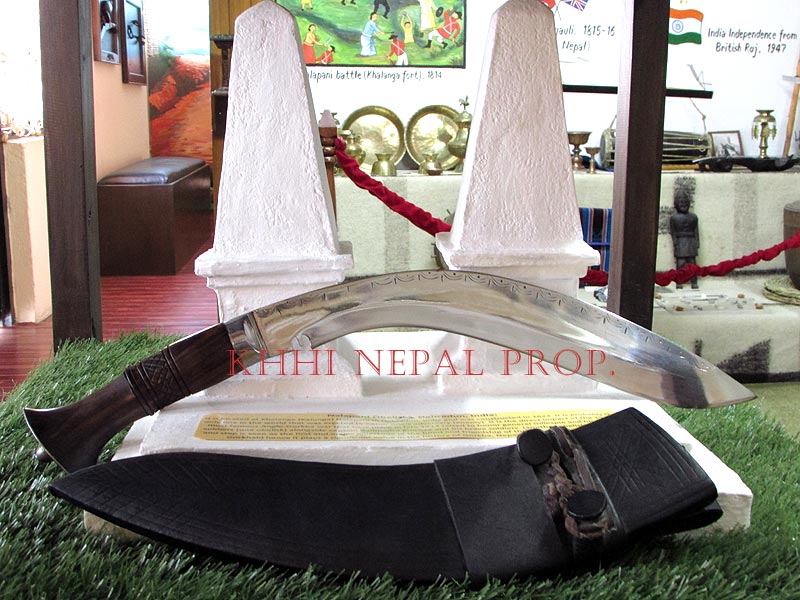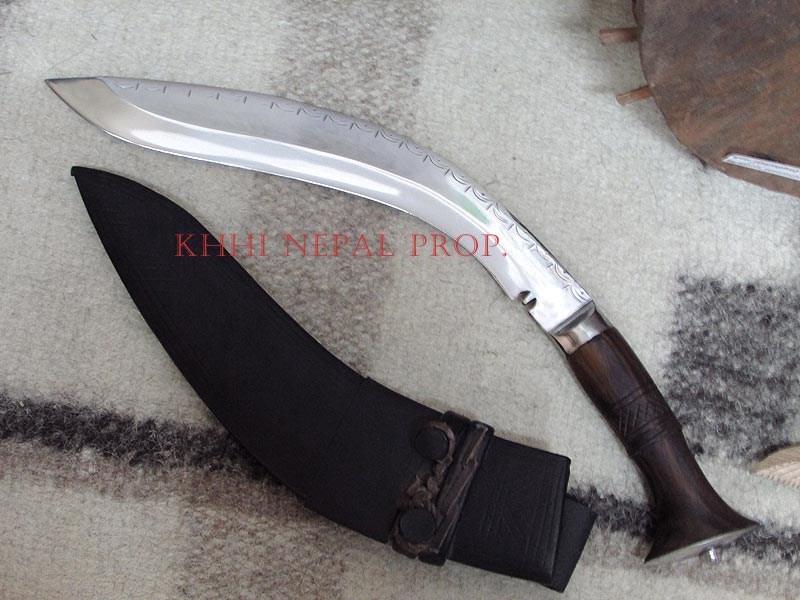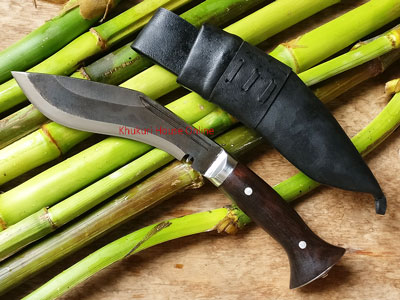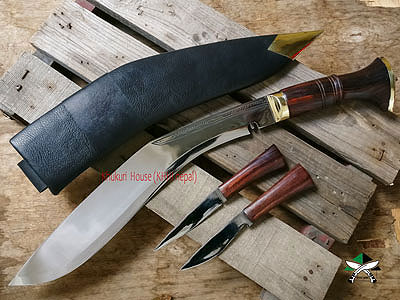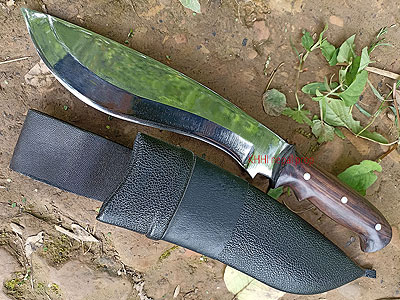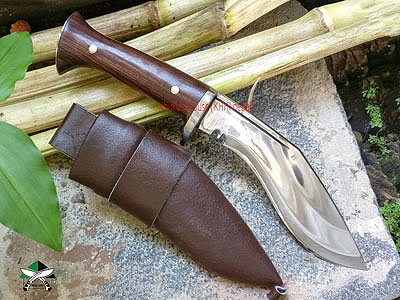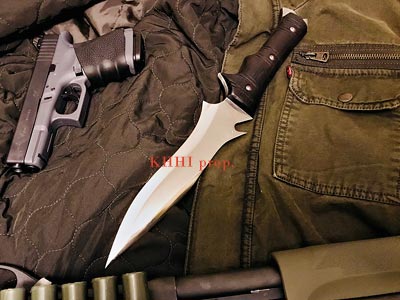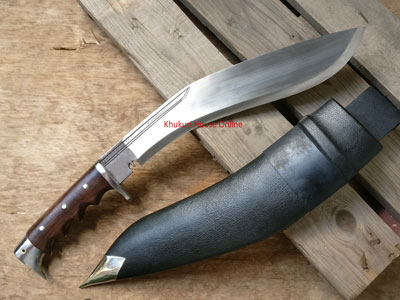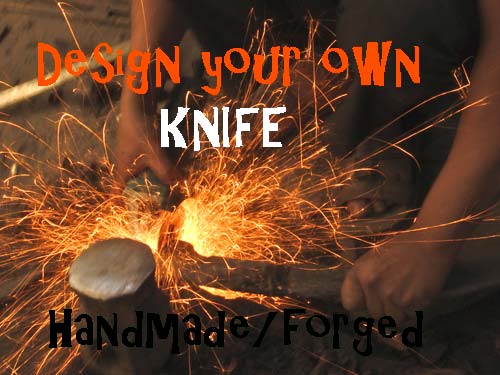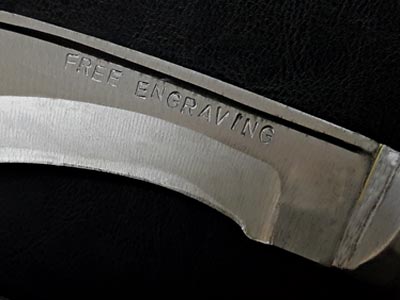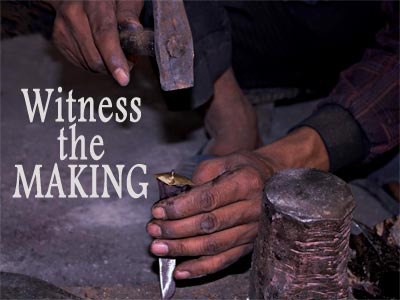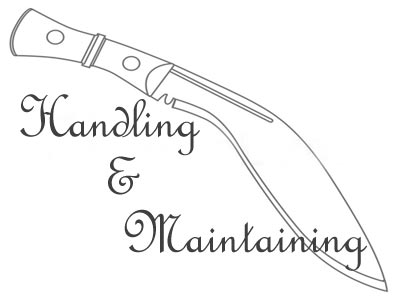17th Century Original Crescent Khukuri (Salyani)
The history has its pages written in golden letters by this khukuri; now a useful tool and prized possession..
- Blade Length (in): 12
- Handle Length (in): 6
- Blade Steel: 5160
- Handle Material: Rosewood
USD 98.00
115.00
Salyani; the original crescent shape of Khukuri retained from 17th Century to date ...
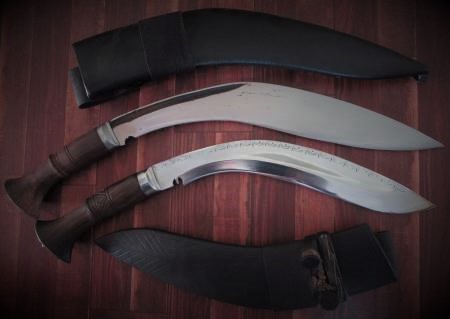 Salyan district in the west of Nepal where the Salyan khukuri was founded in 17th century continues to make this unique heavily curved crescent shaped khukuri blade till date pretty much the same way. It has retained the originality and authenticity of the khukuri since first made by completely ignoring the modern demand, time and adjustment. Salyanese had their own taste of khukuris and made it in hundreds in various shapes and sizes. Amongst the many this sickle shaped, highly curved khukuri with no shoulder (jooro) stands out from the rest and caught fame in no time. Primary made as a battle knife it was also largely used for domestic purpose. In the event of unification from the kingdom of Gorkha in 1760 and later, Gorkhali Sainik had to face the gruesome edge of the Salyani khukuris of the Salyan rajya but later had to submit to Gorkha’s supremacy. In the later years many Gorkhas are seen carrying this unique knife against the British Raj.
Salyan district in the west of Nepal where the Salyan khukuri was founded in 17th century continues to make this unique heavily curved crescent shaped khukuri blade till date pretty much the same way. It has retained the originality and authenticity of the khukuri since first made by completely ignoring the modern demand, time and adjustment. Salyanese had their own taste of khukuris and made it in hundreds in various shapes and sizes. Amongst the many this sickle shaped, highly curved khukuri with no shoulder (jooro) stands out from the rest and caught fame in no time. Primary made as a battle knife it was also largely used for domestic purpose. In the event of unification from the kingdom of Gorkha in 1760 and later, Gorkhali Sainik had to face the gruesome edge of the Salyani khukuris of the Salyan rajya but later had to submit to Gorkha’s supremacy. In the later years many Gorkhas are seen carrying this unique knife against the British Raj.
name & history of Salyani Kukri
Salyan as a place .. Salyan geographically lies in the western region of Nepal. Most of its area falls in hilly region although its extreme south touches the Terai (plain) belt. Salyan was one of the Baise Rajya, a confederation of 22 petty kingdoms in the Karnali (Ghagra) region before it was invaded and unified as one single nation/state by Gorkha kingdom. The word Salyan is derived from the Nepali word sallo which means pine tree or conifer. Salyan has large cultivation land and the people’s main occupation is farming and poultry. The total population is estimated to be around 0.3 million till 2019-20. Chettri holds the major population with Newars and Bramins falling back respectively. Salyan is well known for conservation of its very old structures, tradition and culture.
Salyani as a “Kukri”; making, specs & features and the unique shape
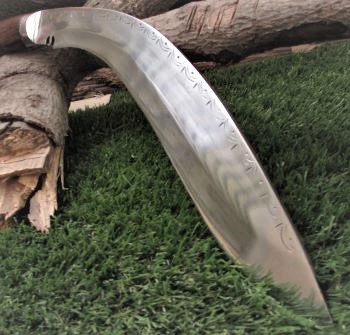 The shape of the Salyani is very unique and distinctive. The blade is semi curved, almost a crescent shape with no shoulder (peak) at all. A series of pattern is forged all along the top panel of the blade on both sides. Salyanese since old era had the tendency of carving beautiful patterns (buttas) all over the blade, sometimes with gold and silver decoration, to denote the religious, mythical aspect and their belief. The bevel of the knife is also much bigger (taller) compared to its counterparts of that era. This long elongated deep bevel would facilitate a sharp and sleek edge to inflict deep and deadly cut. The semi curved blade of Salyani is slimmer and slender thus lighter.
The shape of the Salyani is very unique and distinctive. The blade is semi curved, almost a crescent shape with no shoulder (peak) at all. A series of pattern is forged all along the top panel of the blade on both sides. Salyanese since old era had the tendency of carving beautiful patterns (buttas) all over the blade, sometimes with gold and silver decoration, to denote the religious, mythical aspect and their belief. The bevel of the knife is also much bigger (taller) compared to its counterparts of that era. This long elongated deep bevel would facilitate a sharp and sleek edge to inflict deep and deadly cut. The semi curved blade of Salyani is slimmer and slender thus lighter.
Handle; basic and simple made from Indian Rosewood however made longer to counter balance the blade’s weight. The end portion towards the butt cap of the handle is slightly curved. Some gentle pattern is done in the center to enhance the beautify. The handle has iron steel fixtures (bolster and butt cap) and is a “Parowal” version (Rat Tail Tang).
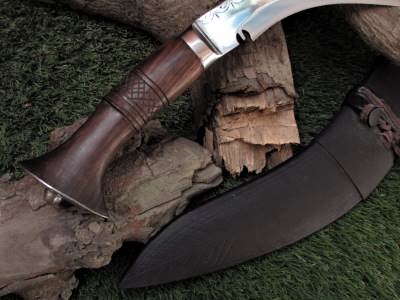 Scabbard: The scabbard of the Salyani is also very special and laborious. It is where all the time, effort and money is invested. The making or preparation of this special kind of buffalo leather is a painstaking job that needs hard work and patience. It goes through a number of stages and requires numerous materials and supplies to complete the process, which, thus may not be possible to mention all. Therefore in brief, the buffalo hide is submersed in water mixed with salt and lime for almost a month and regularly rubbed by feet to soften the leather. Adding various natural herbs from roots of plants and barks of selected trees is also one of the steps in the process done to prolong the life span of the leather and to avoid decaying. Then the prepared leather is again continuously rubbed, twisted and folded for hours with “Tori ko Pina” (paste of mustard plant achieved after grinding) while making the scabbard to get the natural embossed pattern within the leather. The excessive rubbing of the leather results into tiny beads like mold all over the surface, which makes the scabbard distinctive, attractive, durable and decay free. Traditional pattern and linings are overlaid in the scabbard to beautify its look. This simple yet attractive adornment of the Salyani is its trademark that distinguishes and recognizes the kukri from the rest.
Scabbard: The scabbard of the Salyani is also very special and laborious. It is where all the time, effort and money is invested. The making or preparation of this special kind of buffalo leather is a painstaking job that needs hard work and patience. It goes through a number of stages and requires numerous materials and supplies to complete the process, which, thus may not be possible to mention all. Therefore in brief, the buffalo hide is submersed in water mixed with salt and lime for almost a month and regularly rubbed by feet to soften the leather. Adding various natural herbs from roots of plants and barks of selected trees is also one of the steps in the process done to prolong the life span of the leather and to avoid decaying. Then the prepared leather is again continuously rubbed, twisted and folded for hours with “Tori ko Pina” (paste of mustard plant achieved after grinding) while making the scabbard to get the natural embossed pattern within the leather. The excessive rubbing of the leather results into tiny beads like mold all over the surface, which makes the scabbard distinctive, attractive, durable and decay free. Traditional pattern and linings are overlaid in the scabbard to beautify its look. This simple yet attractive adornment of the Salyani is its trademark that distinguishes and recognizes the kukri from the rest.
Lastly Salyani, the immortal kukri also known as the long leaf khukuri in the west, has come a long way since 17th century and continues to uphold it amazing legacy as a great Immortal knife. This classic khukuri is a prized possession for any collector and holds a special place in the glorious history of Nepal.
Reviews (0)
Give us your valuable review on our items.
See Other Amazing Products Too...
US $
55.00
65.00
US $ 149.00
US $ 77.00
US $ 60.00
US $ 99.99
US $ 145.00

